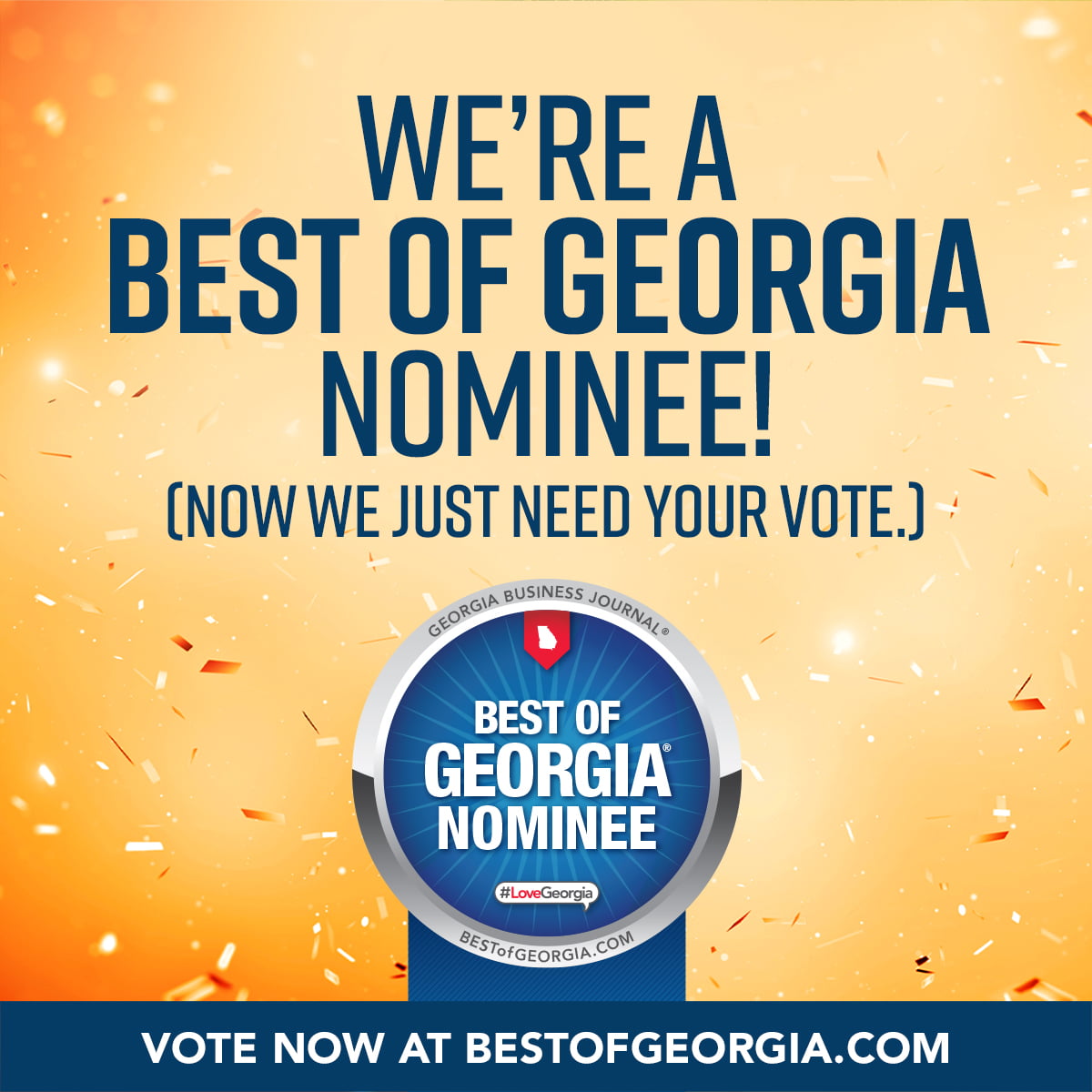Storytelling in marketing can transform your brand‘s message into a powerful narrative that captivates audiences. This article explores the key elements of compelling marketing stories, how to develop your brand‘s signature story, and effective implementation across various channels. By mastering these techniques, you’ll learn to create memorable campaigns that resonate with your target audience and drive engagement. We’ll also examine successful examples and provide metrics to measure the impact of your storytelling efforts, helping you craft narratives that truly connect with customers.
Storytelling in Marketing: Why Your Brand Needs a Narrative to Thrive
Understanding the Power of Narrative in Marketing Strategy

Storytelling in marketing harnesses the power of narrative to forge deeper customer connections and boost brand memorability. To get started, marketers transform abstract concepts into tangible experiences, tapping into the psychological foundations that make stories so effective. This approach leverages imagination as a valuable asset in advertising, shaping culture, and leaving lasting impressions on audiences, much like TED talks do with their compelling narratives.
Building Stronger Customer Connections Through Stories
Effective storytelling in marketing creates powerful connections between brands and customers. Companies like Warby Parker have mastered this art, using narratives to showcase their products and mission. By integrating stories into their content strategy, businesses can engage audiences on a deeper level. For instance, Coca-Cola’s “Share a Coke” campaign personalized the brand experience, encouraging customers to become part of the story. This approach not only boosts engagement but also increases the likelihood of customers sharing their email addresses for future communications. To get started, businesses can implement a free marketing strategy and secure reliable website hosting:
- Identify your brand‘s unique story
- Create relatable characters or scenarios
- Use storytelling across various marketing channels
- Encourage customer participation in the narrative
- Measure the impact on engagement and conversions
How Brand Storytelling Increases Memorability
Brand storytelling enhances memorability by creating emotional connections with audiences through authentic narratives. By incorporating testimonials and real-life experiences into marketing communications, businesses can make their messages more relatable and impactful. Effective storytelling on WordPress websites, combined with SEO strategies, can significantly boost a brand’s visibility and recall. This approach not only improves engagement but also reinforces the brand’s authenticity, making it more likely for customers to remember and choose the brand in the future.
Making Abstract Concepts Tangible With Narratives
Narratives transform abstract concepts into tangible experiences, making complex ideas accessible to customers. By casting the customer as the hero in their story, businesses can illustrate how their products or services lead to success. Effective use of graphics and automation in storytelling, especially on a well-hosted website, can further enhance the visualization of abstract concepts, making them more relatable and memorable for the audience.
The Psychological Basis for Storytelling Effectiveness
The psychological basis for storytelling effectiveness lies in its ability to evoke emotion and create lasting memories. Stories activate multiple areas of the brain, making them a powerful tool for local SEO and email marketing strategies. Throughout history, humans have used narratives to convey information and connect with others, making storytelling an essential aspect of communication and marketing:
| Element | Impact |
|---|---|
| Emotion | Increases engagement and memorability |
| Brain Activation | Enhances information retention |
| Historical Context | Taps into innate human communication patterns |
Narratives shape marketing strategies. Let’s explore the core elements that make these stories compelling.
Core Elements of Compelling Marketing Narratives

Effective marketing narratives hinge on key elements that drive engagement and results. Creating authentic characters, introducing conflict, structuring for emotional impact, defining clear resolutions, and identifying a unique brand voice are crucial components. These elements, when combined with marketing automation, video content, and paid advertising on platforms like Facebook, form a powerful marketing strategy that resonates with audiences and drives business growth.
Creating Authentic and Relatable Characters
Creating authentic and relatable characters is crucial for effective marketing narratives. Marketers use social media analytics and content creation strategies to develop personas that resonate with their target audience. By analyzing data and media consumption patterns, businesses can craft characters that capture attention and foster emotional connections. These characters serve as the focal point of brand stories, helping audiences see themselves in the narrative and driving engagement across various platforms:
- Research target audience demographics and psychographics
- Develop character backstories and motivations
- Align character traits with brand values
- Use social media to test and refine character concepts
- Incorporate customer feedback to enhance authenticity
Introducing Meaningful Conflict and Tension
Introducing meaningful conflict and tension in marketing narratives creates a compelling hook that captivates audiences and drives brand awareness. By presenting challenges or obstacles related to sustainability or other relevant concepts, marketers can showcase how their products or services provide solutions. This approach, when combined with visual elements like infographics, helps illustrate the journey from problem to resolution, making the brand‘s value proposition clearer and more impactful in the digital landscape of the internet.
Structuring Your Story for Emotional Impact
Structuring a story for emotional impact is crucial in social media marketing, where messages must resonate with the community‘s brain and emotions. Marketers craft narratives that follow a strategic arc, building tension and resolution to engage audiences effectively. This approach taps into the brain‘s reward centers, creating a memorable marketing experience that fosters connection and drives action:
| Story Element | Emotional Impact |
|---|---|
| Introduction | Curiosity |
| Rising Action | Anticipation |
| Climax | Excitement |
| Resolution | Satisfaction |
Defining a Clear Resolution or Transformation
Defining a clear resolution or transformation is crucial for effective marketing narratives, especially in campaigns utilizing platforms like TikTok and Twitter. Marketers leverage technology to craft compelling stories that showcase how their products or services solve problems or facilitate positive change. By clearly outlining the goal and the journey towards its achievement, companies create engaging narratives that resonate with their audience and drive campaign success.
Identifying Your Unique Brand Voice for Storytelling
Identifying a unique brand voice for storytelling is crucial for businesses in the United States to stand out in a crowded market. By analyzing audience perception and relevant statistics, companies can develop a distinctive narrative style that resonates with their target demographic. This approach involves crafting a compelling plot and utilizing expert copywriting techniques to create a consistent and memorable brand identity across all marketing channels.
Developing Your Brand‘s Signature Story

Developing a brand’s signature story requires creativity and an understanding of the sales funnel marketing process. This section explores how to pinpoint audience values, determine central messages, select appropriate frameworks, and weave brand missions into narratives. By focusing on these key touchpoints, businesses can craft compelling stories that resonate with their target audience and drive engagement throughout the customer journey.
Pinpointing Your Target Audience‘s Values and Aspirations
Pinpoint target audience values and aspirations when developing a brand’s signature story. By conducting thorough market research and analyzing customer data, businesses can create a compelling story arc that resonates with their audience’s desires and goals. This approach allows companies to craft advertising campaigns that speak directly to their customer’s needs, whether it’s financial security through responsible credit card use or inspiring leadership qualities. The result is a narrative that not only captures attention but also drives engagement and conversions:
| Audience Value | Story Element | Marketing Application |
|---|---|---|
| Financial Security | Overcoming Challenges | Credit Card Benefits |
| Personal Growth | Character Development | Leadership Programs |
| Innovation | Transformation | Technology Solutions |
Determining the Central Message of Your Narrative
Determining the central message of a brand‘s narrative is crucial for creating a compelling story that resonates with the target audience. Whether promoting a new iPhone or showcasing a premium coffee blend, the core message should align with the brand‘s values and the customers’ aspirations. By focusing on key elements such as credibility, beauty, or the pursuit of a dream, marketers can craft narratives that not only capture attention but also inspire action and foster brand loyalty.
Selecting a Story Framework That Fits Your Goals
Selecting an appropriate story framework is crucial for achieving marketing goals and engaging consumers effectively. Technical SEO strategies ensure these narratives are discoverable on Google, enhancing lead generation efforts. By carefully crafting stories that build suspense and resonate with the target audience, brands can create compelling narratives that drive consumer interest and action.
Weaving Your Brand‘s Mission Into the Narrative
Weave a brand‘s mission into its narrative to create a compelling marketing experience. By incorporating the company’s core values and goals into storytelling, businesses can address customer pain points more effectively and influence consumer behavior. This approach allows brands to convey their message through various multimedia channels, ensuring that every word resonates with the target audience and reinforces the brand‘s identity.
Implementing Storytelling Across Marketing Channels

Implementing storytelling across marketing channels requires a strategic approach tailored to each platform. From crafting engaging social media narratives to producing narrative-driven video content, marketers can leverage various techniques to connect with their audience. Email marketing sequences, website content integration, and customer testimonials all play crucial roles in weaving a cohesive brand story. By utilizing analytics and developing personas, businesses can optimize their storytelling efforts across channels like LinkedIn and podcasts.
Crafting Engaging Stories for Social Media Platforms
Use the power of storytelling on social media platforms to drive sales and enhance reputation. By conducting an initial onboarding audit, the agency identifies key narrative elements that resonate with each client’s target audience. This approach allows businesses to craft engaging stories that capture attention, foster emotional connections, and encourage sharing across various social media channels, ultimately boosting brand visibility and customer engagement.
Producing Narrative-Driven Video Content
Narrative-driven video content helps reach the target market. By incorporating compelling “about us” stories and leveraging nostalgia, businesses can create emotional connections with viewers. Web design expertise ensures that videos are seamlessly integrated into websites, enhancing user experience and engagement. Each video concludes with a strong call to action, guiding viewers towards desired outcomes and driving conversions.
Using Story Arcs in Email Marketing Sequences
Leverages story arcs in email marketing sequences to engage subscribers and drive conversions. By structuring emails with a clear beginning, middle, and end, the agency creates a sense of anticipation and progression that keeps readers invested. This approach allows businesses to address customer fears, provide valuable information, and showcase their unique value proposition throughout the email journey. Using tools like HubSpot, marketers can automate these story-driven sequences, ensuring each email builds upon the last to create a compelling narrative:
| Email Stage | Story Element | Marketing Goal |
|---|---|---|
| Welcome Email | Introduction | Establish Brand Connection |
| Educational Series | Rising Action | Provide Value and Build Trust |
| Offer Email | Climax | Present Solution to Customer Needs |
| Follow-up | Resolution | Reinforce Decision and Encourage Action |
Integrating Brand Stories Seamlessly Into Website Content
Integrate brand stories seamlessly into website content to capture the minds of visitors and improve Google business profile visibility. The agency’s chief marketing officer emphasizes the power of narrative in shaping perceptions, likening it to how glasses focus on vision. By weaving compelling stories throughout the site’s architecture, businesses can create a cohesive brand experience that resonates with their audience and stays top-of-mind. This approach not only enhances user engagement but also provides fresh, relevant content for news sections, keeping the website dynamic and search engine friendly.
Telling Stories Through Customer Testimonials and Case Studies
Harness the power of customer testimonials and case studies to create compelling narratives that resonate with their audience. By leveraging Instagram’s visual platform and Google search analytics, the agency crafts image-rich stories that showcase real client successes. These authentic narratives not only enhance credibility but also provide potential customers with relatable experiences, making it easier for them to envision their own success with the agency’s services.
The stories took root across channels. Examples bloomed, showing their power.
Examples of Effective Storytelling in Marketing Campaigns

Effective storytelling in marketing campaigns transforms brand messages into compelling narratives. This section examines successful strategies from top brands, startups building identity through stories, non-profits achieving goals with narrative, and B2B storytelling that connects. By analyzing these examples, marketers can learn to craft engaging conversations, develop strong story structures, and create protagonists that resonate with audiences, all while optimizing for search engines.
Analyzing Successful Narrative Strategies From Top Brands
Learn how to harness the power of storytelling across various industries and conduct thorough research to identify successful narrative strategies from top brands. By analyzing campaigns that evoke happiness and create emotional connections, the agency helps clients develop compelling brand stories that resonate with their target audience. This approach not only enhances brand perception but also supports effective link-building strategies, as engaging narratives are more likely to be shared and referenced across digital platforms.
How Startups Use Stories to Build Identity
Startups leverage storytelling to build their identity and establish loyalty among their target audience. By crafting compelling narratives around their website reviews, startups can showcase their unique value proposition and differentiate themselves in the market. Utilizing platforms like Mailchimp for email marketing and collaborating with influencers, these emerging businesses create authentic stories that resonate with their audience. The agency helps startups develop a cohesive brand identity, including logo design, that aligns with their narrative and supports their growth objectives:
| Storytelling Element | Startup Application | Marketing Impact |
|---|---|---|
| Origin Story | Founder’s Journey | Brand Authenticity |
| Customer Success | Website Reviews | Social Proof |
| Visual Branding | Logo Design | Brand Recognition |
| Community Building | Influencer Partnerships | Audience Expansion |
Non-Profit Organizations Achieving Goals Through Narrative
Non-profit organizations harness the power of storytelling to achieve their goals, evoking empathy and inspiring action. These organizations ensure their narratives are effectively presented online, connecting with their audience on an emotional level. Through compelling stories, non-profits transform abstract causes into relatable experiences, encouraging customer feedback and fostering a sense of community. This art of narrative helps them illustrate the impact of donations and volunteer work, making their mission tangible and motivating supporters to contribute to their cause.
Business-to-Business Storytelling That Connects
Business-to-business storytelling connects with clients and builds lasting relationships. By incorporating interactive storytelling techniques into their content writing strategy, the agency helps B2B companies create engaging newsletters that resonate with their target audience. This approach not only maximizes marketing budgets but also enhances reputation management efforts, showcasing the value and expertise of B2B brands through compelling narratives that address industry challenges and solutions.
Measuring the Success of Your Marketing Stories

Measuring the success of marketing stories involves tracking audience engagement, assessing brand perception shifts, and correlating storytelling efforts with conversion rates. By analyzing performance data, marketers can refine narratives to maximize impact. This process incorporates virtual reality experiences and motivational language to enhance value. Ethical practices ensure authentic brand storytelling, fostering trust through compelling photographs and narratives.
Tracking Audience Engagement With Narrative Content
Comprehensive market research and website maintenance strategies track audience engagement with narrative content. By analyzing digital marketing metrics and revenue data, the agency helps businesses understand how their stories resonate with target audiences. This scientific approach to storytelling allows companies to refine their narratives, optimize engagement, and ultimately drive business growth:
| Engagement Metric | Narrative Element | Business Impact |
|---|---|---|
| Time on Page | Story Length | Audience Interest |
| Social Shares | Emotional Appeal | Brand Awareness |
| Conversion Rate | Call to Action | Revenue Growth |
| Bounce Rate | Opening Hook | Content Relevance |
Assessing Brand Perception Shifts From Storytelling
Assess brand perception shifts from storytelling efforts. By leveraging artificial intelligence and Salesforce tools, the agency helps businesses track changes in customer sentiment and brand perception. This data-driven approach allows companies to refine their free marketing strategies, ensuring that user stories resonate with their target audience and drive positive shifts in brand perception:
| Storytelling Element | Perception Metric | Assessment Tool |
|---|---|---|
| Brand Values | Customer Alignment | AI Sentiment Analysis |
| Product Benefits | Perceived Value | Salesforce Surveys |
| Customer Journey | Brand Loyalty | User Story Mapping |
| Company Mission | Brand Trust | Social Media Monitoring |
Correlating Storytelling Efforts With Conversion Rates
Correlate storytelling efforts with conversion rates to measure marketing success. By analyzing data from various touchpoints, including social media engagement and website interactions, the agency helps businesses understand how their narratives drive customer actions. This approach not only improves conversion rates but also fosters brand loyalty, as compelling stories create emotional connections that encourage repeat business and word-of-mouth referrals.
Refining Your Narratives Based on Performance Data
Utilize performance data to refine marketing narratives, enhancing their effectiveness and resonance with target audiences. By analyzing metrics such as engagement rates, conversion percentages, and customer feedback, the agency helps businesses optimize their storytelling strategies. This data-driven approach allows companies to identify which narrative elements are most impactful, enabling them to craft more compelling stories that drive results:
- Analyze engagement metrics across channels
- Identify high-performing narrative elements
- Adjust storytelling approach based on audience response
- Test and iterate narratives for optimal performance
- Align refined stories with overall marketing objectives
Ethical Practices for Authentic Brand Storytelling
It’s important to recognize the importance of ethical practices in authentic brand storytelling. This helps businesses maintain transparency and integrity in their narratives, ensuring that stories align with real company values and customer experiences. By conducting thorough research and leveraging data analytics, you can create truthful, impactful stories that resonate with audiences while adhering to ethical marketing standards:
| Ethical Practice | Implementation | Impact |
|---|---|---|
| Transparency | Clear disclosure of brand relationships | Increased consumer trust |
| Authenticity | Genuine customer testimonials | Enhanced brand credibility |
| Responsibility | Accurate product representations | Reduced customer dissatisfaction |
| Inclusivity | Diverse storytelling perspectives | Broader audience appeal |
Frequently Asked Questions
How can storytelling enhance a marketing strategy?
Storytelling enhances marketing strategies by creating emotional connections with audiences. It transforms brands into relatable entities, making messages more memorable and impactful. Through compelling narratives, businesses can showcase their values, differentiate themselves, and inspire customer loyalty, ultimately driving engagement and conversions.
What are the key elements of an effective marketing narrative?
An effective marketing narrative engages the audience through compelling storytelling, highlighting the brand‘s unique value proposition. It establishes emotional connections, addresses customer pain points, and showcases solutions. The narrative should be authentic, consistent across channels, and aligned with the target audience‘s values and aspirations.
How do I create a unique brand story for my business?
To create a unique brand story, reflect on your business’s origins, values, and mission. Identify what sets you apart from competitors and how you solve customer problems. Craft a narrative that resonates with your target audience, showcasing your journey and the impact you aim to make in your industry.
Which marketing channels are best suited for storytelling campaigns?
Social media platforms, video-sharing sites, and blogs are ideal for storytelling campaigns. These channels allow brands to create engaging narratives, share visual content, and connect emotionally with audiences. Interactive elements and user-generated content can enhance storytelling efforts, fostering deeper connections with consumers.
How can I measure the impact of storytelling in my marketing efforts?
Measure storytelling impact in marketing by tracking engagement metrics like time on page, social shares, and click-through rates. Analyze customer feedback, conversions, and brand sentiment. Compare the performance of story-driven content against traditional marketing to gauge effectiveness and ROI.
Your Audience is Waiting to Hear Your Story—Tell It Right With Newman Web Solutions
Great marketing isn’t about selling—it’s about telling stories that captivate your audience and build lasting emotional connections. At Newman Web Solutions, we specialize in strategic storytelling in your digital marketing strategies that turn your brand message into compelling narratives across all platforms—from website copy to social media and video campaigns. Our data-driven approach ensures your story doesn’t just get heard, but remembered and shared. Ready to make your brand unforgettable? Claim your FREE 30-minute marketing strategy session today by calling (404) 301-9189 or scheduling online. Let’s craft a narrative that truly resonates with your ideal customers.





